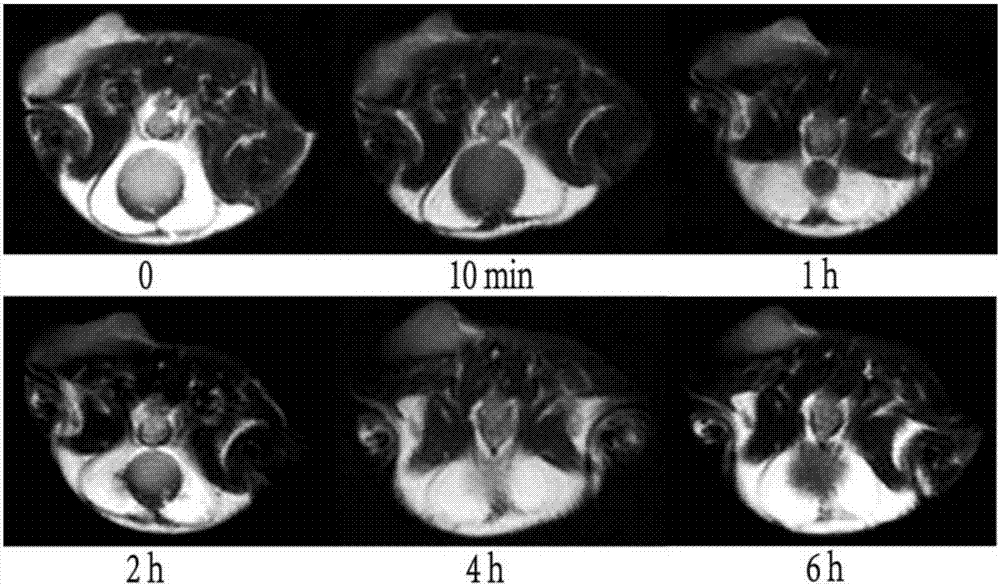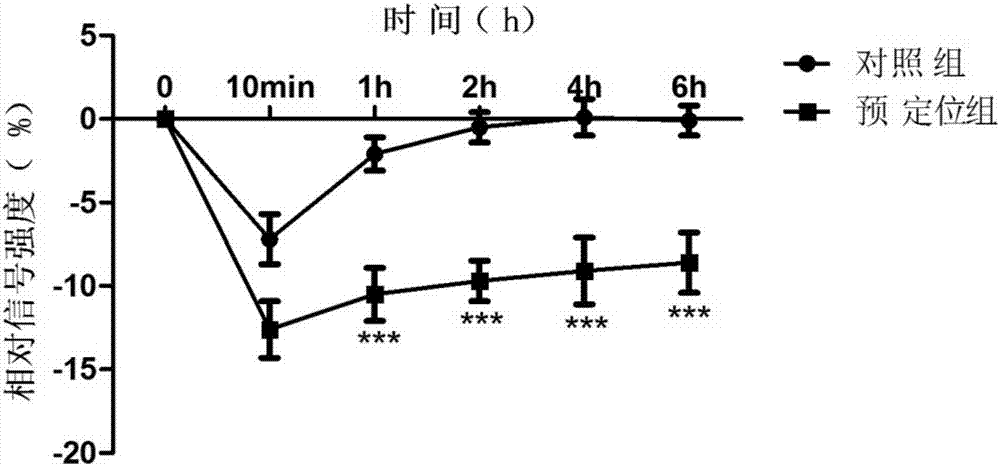Magnetic resonance molecular probe for detecting early-stage hepatocellular carcinoma
A technology for molecular probes and hepatocellular carcinoma, which can be used in preparations for in vivo experiments, emulsion delivery, drug delivery, etc., can solve problems such as production difficulties, immunogenicity, human toxicity, and high price, and achieve improved contrast The effect of dosage uptake, good biocompatibility, simple production process
- Summary
- Abstract
- Description
- Claims
- Application Information
AI Technical Summary
Problems solved by technology
Method used
Image
Examples
Embodiment Construction
[0029] 1 Materials and methods
[0030] 1.1 Materials and Instruments
[0031] 1.1.1 Main reagents:
[0032] Polypeptide: Arg-Leu-Asn-Val-Gly-Gly-Thr-Tyr-Phe-Leu-Thr-Thr-Arg-Gln (SEQ ID: 1) artificially synthesized biotin-modified polypeptide, produced by Boxin (Xiamen) Bio Technology Co., Ltd. Synthesis.
[0033] Polyethylene glycol-ultrasmall superparamagnetic iron oxide (PEG-USPIO) was purchased from Wandegao (Beijing) Technology Development Co., Ltd.
[0034] Streptavidin (SA) was purchased from Sigma (USA).
[0035] 0.1M MES buffer, EDC, sulfo-NHS, MTT were purchased from Sigma (USA).
[0036]DMSO, 4% paraformaldehyde, 2-mercaptoethanol, ethanolamine, and agarose were purchased from Aladdin (Shanghai) Co., Ltd.
[0037] GPC3 primary antibody was purchased from Beijing Boaosen Biotechnology Co., Ltd.
[0038] The secondary antibody labeled with fluorescein isothiocyanate was purchased from Beijing Boaosen Biotechnology Co., Ltd.
[0039] Prussian blue reaction solut...
PUM
| Property | Measurement | Unit |
|---|---|---|
| particle size | aaaaa | aaaaa |
| particle size | aaaaa | aaaaa |
Abstract
Description
Claims
Application Information
 Login to View More
Login to View More - R&D
- Intellectual Property
- Life Sciences
- Materials
- Tech Scout
- Unparalleled Data Quality
- Higher Quality Content
- 60% Fewer Hallucinations
Browse by: Latest US Patents, China's latest patents, Technical Efficacy Thesaurus, Application Domain, Technology Topic, Popular Technical Reports.
© 2025 PatSnap. All rights reserved.Legal|Privacy policy|Modern Slavery Act Transparency Statement|Sitemap|About US| Contact US: help@patsnap.com



